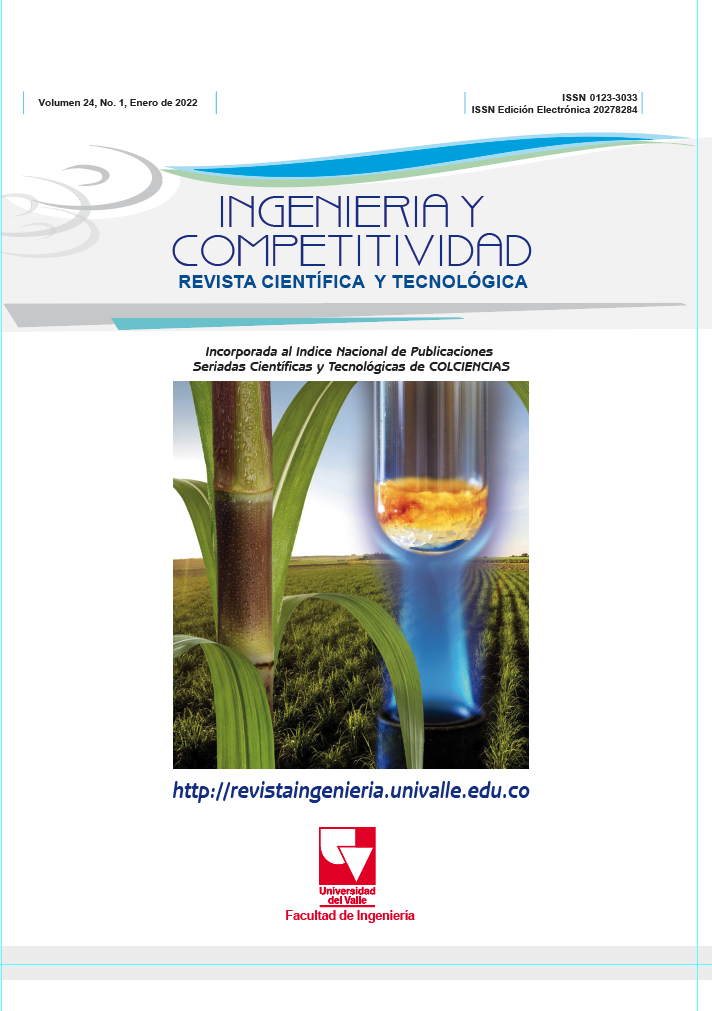Implementación de nuevos procesos de fabricación y ensamble de carrocerías para buses tipo BRT
Contenido principal del artículo
El presente artículo pretende dar a conocer la transformación de los procesos productivos de la compañía Superpolo S.A.S y su marca Marcopolo, para el desarrollo de nuevos buses articulados y biarticulados para los sistemas de transporte masivo tipo BRT (Bus Rapid Transit), los cuales permiten una reducción de emisiones al medio ambiente, cumpliendo con los niveles de calidad exigidos en las nuevas licitaciones en Colombia y particularmente para el sistema de transporte masivo en Bogotá (Transmilenio).
Se hace una breve descripción del mercado automotriz en Colombia, los carroceros más relevantes y sus desafíos, enfocando la importancia de generar iniciativas que permitan mitigar las brechas y cómo Superpolo las afrontó. Adicionalmente se realiza una revisión de las mejoras implementadas tales como la herramienta Andon, el proceso del tren de laminación para piezas de fibra de vidrio, el doblado de piezas metálicas, los hornos de secado y pintura, la nueva fabricación de techos en PRFV dentro de la compañía, la prueba de estabilidad y la prueba de filtraciones de agua. Estas mejoras permitieron aumentar la capacidad instalada para dar cumplimiento a los tiempos de entrega, además de resultados positivos en la ergonomía de los trabajadores, logrando así que una empresa nacional pudiese brindar nuevas soluciones para enfrentar la demanda de buses para los sistemas de transporte masivo de Colombia y con proyección para la región.
- buses articulados
- Bus Rapid Transit (BRT)
- carrocería
- industria automotriz
- manufactura
- Transmilenio
- transporte masivo
(1) Proexport Colombia. INDUSTRIA AUTOMOTRIZ EN COLOMBIA [Internet]. September 2012. Available from: https://sistemamid.com.ar/panel/uploads/biblioteca/2016-01-17_11-34-45131711.pdf
(2) Rico J, Sánchez CM, Laverde R. Sector Automotor colombiano: innovar para crecer. ANDI Magazine. 2012(234):10-13.
(3) ANDI. Encuesta de opinión industrial conjunta. [Internet]. January 2013. Available from: http://proyectos.andi.com.co/SitEco/Documentos%202013/Informe%20EOIC%20Enero%202013.pdf
(4) Guevara DS, Millán JS, Rubio AM. Análisis de la industria automotriz en Colombia frente al tratado de libre comercio con la República de Corea [Bachelor’s Thesis]. Bogotá: Universidad del Rosario; 2014. Available from: http://repository.urosario.edu.co/handle/10336/8694
(5) Bejarano LF. Perspectivas del sector automotriz en Colombia [Bachelor’s Thesis]. Bogotá: Universidad Militar Nueva Granada; 2015. Available from: http://hdl.handle.net/10654/16074 .
(6) Contraloría de Bogotá. Dirección de Estudios de Economía y Políticas Públicas. Informe Estructural. Proceso de Chatarrización y Modernización de la Flota de Transmilenio S.A. y su Incidencia Ambiental en el Distrito Capital. Bogotá D.C.: PAE; 2019.
(7) Rodriguez DA, Vergel-Tovar E. Sistemas de transporte público masivo tipo BRT (Bus Rapid Transit) y desarrollo urbano en América Latina. Lincon Institute Land Lines. 2013:16-24. Available from: https://www.lincolninst.edu/publications/articles/sistemas-transporte-publico-masivo-tipo-brt-bus-rapid-transit-desarrollo
(8) Grigoratos T, Fontaras G, Giechaskiel B, Zacharof N. Real world emissions performance of heavy- duty Euro VI diesel vehicles. Atmospheric Enviroment. 2018;201:348-359. https://doi.org/10.1016/j.atmosenv.2018.12.042.
(9) Mendoza Nuñez JD. Estudio experimental de un motor bi-combustible para el uso de biogas [Bachelor’s Thesis]. Lima: Pontifica Universidad Católica de Perú; 2015. Available from: http://hdl.handle.net/20.500.12404/6166.
(10) Cooper BT. Role of NO in Diesel Particulate Emission Control. SAE Technical Paper 890404. 1989. https://doi.org/10.4271/890404.
(11) Suárez JF. Análisis de los efectos de la implementación de un sistema Andon en una planta ensambladora de vehículos para el aumento de productividad: Caso AYMESA S.A [Master’s Thesis]. Quito: Pontificia Universidad Católica de Ecuador; 2015. Available from: http://repositorio.puce.edu.ec/handle/22000/9722
(12) Jamir MRM, Majid MSA, Khasri A. 8 - Natural lightweight hybrid composites for aircraft structural applications. In: Jawaid M, Thariq M, editors. Sustainable Composites for Aerospace Applications. Elsevier Ltd.; 2018. p. 155–70. https://doi.org/10.1016/B978-0-08-102131-6.00008-6.
(13) Actos adoptados por organos creados mediante acuerdos internacionales. Reglamento n°107 de la comisión Económica para Europa de las Naciones Unidas (CEPE), sobre disposiciones uniformes relativas a la homologación de vehículos categoría M2 o M3 por lo que respecta a sus características generales de construcción. Official Journal of the European Union N° 51. 2018. p. 34.
(14) Álvarez-Arroyo F. Estudio de los factores que influyen en la hermeticidad de un bus para garantizar la calidad del producto en la empresa de carrocerías VARMA S.A [Bachelor’s Thesis]. Ecuador: Universidad Técnica de Ambato; 2014. Available from: http://repositorio.uta.edu.ec/handle/123456789/8617
(15) Transmilenio. Especificaciones técnicas de vehículos eléctricos para el componente zonal [Internet]. Bogotá; December 2018. Available from: https://n9.cl/jdsh7.
(16) Nikitas A, Karlsson M. A worldwide state-of-the-art analysis for bus rapid transit: Looking for the success formula. Journal of Public Transportation. 2015;18(1):1-33. http://doi.org/10.5038/2375-0901.18.1.3
Descargas

Esta obra está bajo una licencia internacional Creative Commons Atribución-NoComercial-CompartirIgual 4.0.
Los autores que publican en esta revista están de acuerdo con los siguientes términos:
Los autores ceden los derechos patrimoniales a la revista y a la Universidad del Valle sobre los manuscritos aceptados, pero podrán hacer los reusos que consideren pertinentes por motivos profesionales, educativos, académicos o científicos, de acuerdo con los términos de la licencia que otorga la revista a todos sus artículos.
Los artículos serán publicados bajo la licencia Creative Commons 4.0 BY-NC-SA (de atribución, no comercial, sin obras derivadas).





